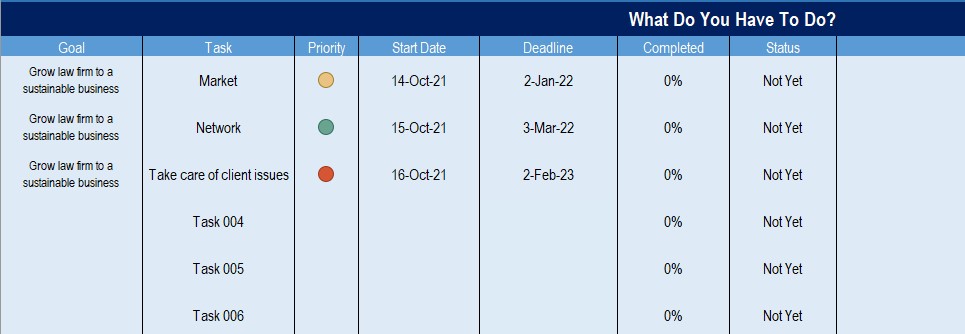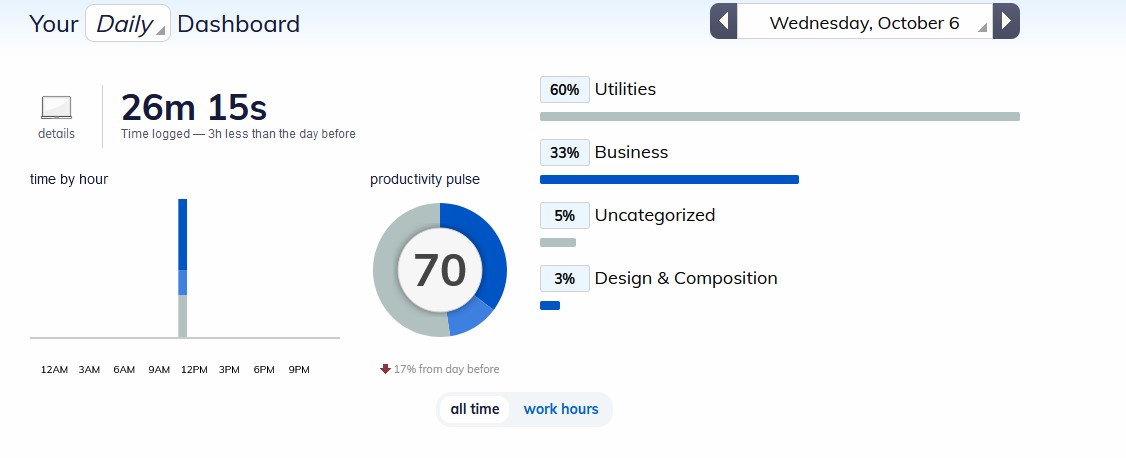Goals
The PDSA Cycle: Perfect Your Process
We all know someone like Tim.
Tim is the first one in the office every morning and the last one to leave in the evening. He is dedicated to what he does. When you need something done, Tim is your go-to guy. He’s reliable and gives everything he does his all.
Tim knows what he wants. He’s got a plan. He has a schedule that he sticks to like it’s the law.
Based on that, you’d think Tim has achieved his every goal. He’s successful on his own terms, right?
Unfortunately not.
Despite his diligent efforts, Tim is not even close to being satisfied with his progress. He hasn’t made it to the top of the career ladder. He hasn’t got the 3-story home has he’s been dreaming of since he was 15. He puts in all this work, but it just isn’t paying off.
Tim could be someone you know or Tim could be you.
You work so hard, but that work doesn’t take you anywhere.
[easy-tweet tweet=”It’s like running on a treadmill. You exhaust yourself, but all that running takes you nowhere.” user=”shutupachieve” url=”https://shutupandachieve.com/the-pdsa-cycle”]Regardless of it all, Tim somehow manages to keep his spirits high and shows up every day waiting for his big breakthrough.
Do you know where Tim went wrong?
Even though he stuck to his plan religiously, he never stopped to check if the plan was taking him in the right direction.
What Tim needs is a system to continuously review his process, check what’s working, and what needs work.
That’s where the PDSA cycle comes in.
The Cycle Of Improvement
Why do you do things the way you do?
Often, it’s for one of two reasons:
- It’s a habit
- It’s the way that activity has always been done
A less common reason is that you analyzed what the best approach is, and thus, you perform the activity in that way.
We don’t do this because it takes effort and some trial and error. Why use up the mental effort when the old ways work just fine?
Think of it like a suit. You could buy a ready-made suit, and you’d look just fine. Or you could get a suit tailored just for you. It’d cost a bit more, yet this one is customized to make you look stunning.
[easy-tweet tweet=”You need a custom-tailored plan for your goals. The PDSA cycle is a scheme to ensure that your plan fits just right.” user=”shutupachieve” url=”https://shutupandachieve.com/the-pdsa-cycle”]The PDSA cycle is a process improvement model that was developed to help hospitals test the changes they made and see if they brought the desired results. It’s a widely used model in hospital settings and after you’re done with this post, I hope it’ll be widely used in your life, too.
PDSA is an acronym for Plan. Do. Study. Act.
Those four components are the steps you go through consecutively until you reach you goal.
Let’s dive deeper into each one:
PLAN
What are you trying to do?
Are you trying to make a change in your life?
Is there a goal you’re pursuing?
How will you make that change or achieve that goal?
Designing your plan of action is the first step of the PDSA cycle. During this step, you:
Identify what your goal is or what change you’ll make
Start with a purpose in mind. All your actions must take you toward that end goal. Without direction, you won’t know whether your actions are getting you the results you need.
Be specific. Don’t say, “I want to start my own business and quit my job”.
Say, “I will start a dog grooming business that cuts and styles fur, paints nails, and sells a wide variety of dog accessories. I will make $15,000 per month allowing me to quit my dreadful accounting job.”
Identify your obstacles
What stands between you and your goal or change? Do you not have enough resources? Are the people around you toxic? Will you be up to the challenge ahead?
Outline the obstacles you might face and think of how you’ll overcome them. Be prepared for what’s ahead.
- Will your friends tell you that it’s a terrible idea? You don’t have to convince them, but don’t let them get to your head either.
- Will pursuing your goal cost you money? Where will that money come from? What’s your budget?
- Will you feel too lazy to get up and put in the work? How will you conquer your excuses and do it anyway?
Outline your actions
What will it take to reach your goal? What activities will you have to do?
In the Becoming Your Future Self Masterclass, I talk about the different types of actions that take you to your goal. There are core actions, i.e., actions that are the keystones to making progress. If you’re an author or blogger, writing a certain number of words per day is a core action.
Another level of actions are the sprinkle-on-top actions, these actions multiply the value of your core actions. An example of this is marketing.
What are your core activities and what are the sprinkle-on-top activities for your goals?
When will you do these activities and how often?
You might not have it all figured out. That’s OK. Because remember it’s the PDSA cycle, you’ll come back to this stage later to tweak it until it’s perfect.
Set milestones and Key Performance Indicators (KPI)
Imagine spending months working toward a goal, only to reach the end of your timeline and realize you weren’t making progress. It’s more heartbreaking than your last breakup.
How can you avoid this tragic happening?
Define your KPIs, then use them to set milestones.
KPIs are the markers that tell you you’re doing a good job. They’re measurable signs that your efforts are paying off.
If you’re trying to make more money, the number of sales you make is a KPI. If you’re trying to grow your audience, the number of social media followers you gain per month is a KPI.
Try to define 3-5 KPIs for your goal, then set small goals for each of them; these are your milestones.
Here’s an example using the Goal Tracker 2.0:
Sally just opened her own law firm. She started a new marketing strategy and wants to see if it’s working. She’s planned what she needs to do to achieve her goal.
![]()
Her KPIs are number of consultation calls, number of new clients, and revenue per month.
Here are her milestones: 10 new consultation calls, 30 new consultation calls, and 50 new consultation calls. 3 new clients, 15 new clients, 40 new clients. $50,000/month, $70,000/month, $130,000/month.

DO
The second stage in the PDSA cycle is all about action.
You have your vision in mind. You know what obstacles you’ll face and how you’ll overcome them. And, you know the tasks you’ll do and when you’ll do them.
You’ve made your plan, now it’s time for your plan to make you.
This stage is the hardest. You’ll slack off a bit. You’ll break the schedule here and there. Whenever that happens, just get back at it. Don’t let a bad day deter you from your path.
[easy-tweet tweet=”While acting on your plan is the essence of the Do phase, tracking your progress is just as important.” user=”shutupachieve” url=”https://shutupandachieve.com/the-pdsa-cyle”]How will you know what’s working and what’s not if you’re not tracking what you’re doing and the results that brings?
Tracking your progress can be as easy as writing what you did each day in your journal or as complex as logging every little detail in a spreadsheet.
I like to have my tracking efforts somewhere in between.
- To track my daily activities, I use a time tracker. My favorite time tracker is Rescue Time.
(Need a guide on how to time track right? Read How to Time Track: A Tool to Regain Your Lost Time.)
- To track my goals and the progress I’m making in each, I use the Goal Tracker 2.0.
- To track my daily habits and activities, I use the Habit Tracker 2.0.
Here’s what that looks like:
Rescue Time automatically tracks what I do on my phone and desktop, so I don’t have to worry about starting and ending each tracking session. For non-digital activities, I track manually through the app.
The Goal Tracker 2.0 holds my goals and the tasks I need to complete each of them. I regularly review this sheet every few days and check off the tasks and subtasks I’ve completed.

Daily, I open my Habit Tracker 2.0 and log my habits. If I did well that day, I’ll color all my cells green. (As you can see, I’ve been slacking off a teeny bit on the meditation.)
All the data you collect during this phase is the key to executing the next phase right.
STUDY
You can work day and night for years and be further away from your goals than when you started.
I’ve seen people put in their all and get nowhere. At the end of the day, they are so confused by their lack of progress.
Like Tim, they never stopped to see if their actions were paying off.
The studying stage is where you review all that you’ve done and what results that work brought you.
Here are some questions to ask yourself during this stage:
- Have you reached your milestones? If not, search for the reason why.
- Are you satisfied with your KPIs? Are they at the level you thought they would be?
- Compare your plan to your actions. Did you follow the plan?
- Does the plan need modified? Are there actions you should add or omit?
- Is the timeline correct? Are you making progress quicker or slower than expected?
While you’re planning, determine how long you’ll stay in the Do phase before reviewing your progress. You could review your progress weekly, monthly, quarterly, or yearly. This depends on your goal and how quickly your actions start to bring results.
If your goal is to lose weight, check your progress weekly. If your goal is to build an online business, it’ll take longer to see results, so you might want to review monthly or even quarterly.
In the Life Audit PowerBook, you set the aspects you want to improve and review and come back every three months to see how you’re doing.
(Where are you in life? Do a life audit and find out!)
ACT
You’ve found the fallacies in your plan. Now, it’s time to act.
You discovered that you can’t write an entire eBook in 2 days. You realized that getting 500 new clients in your first month isn’t a realistic goal. You understand that taking a 3-hours midday break everyday isn’t helping you achieve your goals.
Based on your study findings, change the plan. Add in the actions that need done. Eliminate the unnecessary activities you waste time on. Change the timeline if needed.
The insight you gained in the study stage should put you back on track. With this new plan, start the cycle again.
(Who says you can’t do it? Learn to set realizable goals here.)
Keep Going
The fact is we’re not very good at planning. Before starting, it’s impossible to know all the details about what you need to do and how it needs done.
Your plan is a shot in the dark. You hope it works, but you won’t know if it does until you put it into action.
Once you’re in the middle, you learn what works and what doesn’t.
If you stick to your old plan, you won’t make it to your end destination. Keep your steering wheel a little to the left, and soon enough you won’t be on the road anymore. With your new insight, make a new plan that takes you to your goal.
Plan. Do. Study. Act.



